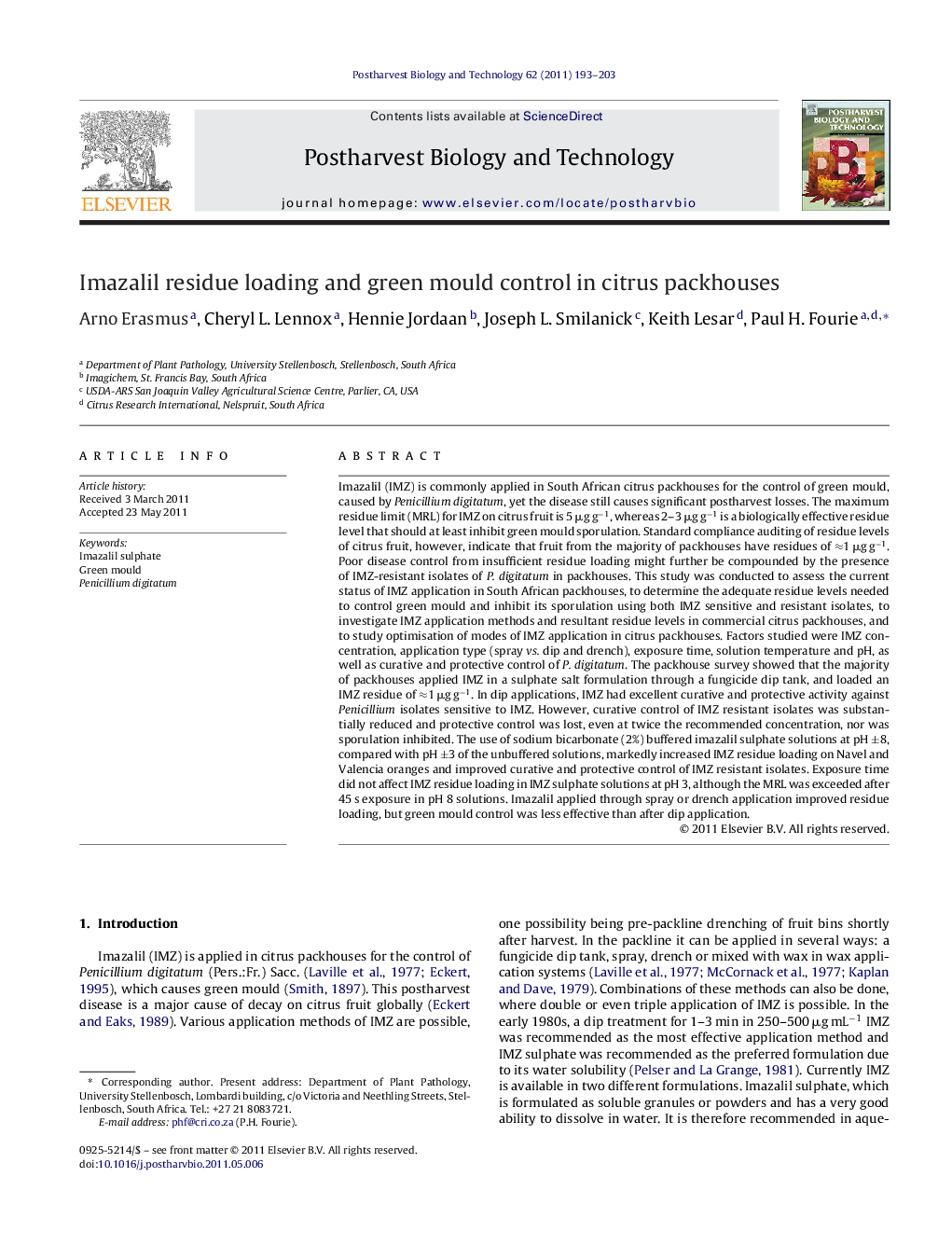| کد مقاله | کد نشریه | سال انتشار | مقاله انگلیسی | نسخه تمام متن |
|---|---|---|---|---|
| 4518866 | 1322802 | 2011 | 11 صفحه PDF | دانلود رایگان |

Imazalil (IMZ) is commonly applied in South African citrus packhouses for the control of green mould, caused by Penicillium digitatum, yet the disease still causes significant postharvest losses. The maximum residue limit (MRL) for IMZ on citrus fruit is 5 μg g−1, whereas 2–3 μg g−1 is a biologically effective residue level that should at least inhibit green mould sporulation. Standard compliance auditing of residue levels of citrus fruit, however, indicate that fruit from the majority of packhouses have residues of ≈1 μg g−1. Poor disease control from insufficient residue loading might further be compounded by the presence of IMZ-resistant isolates of P. digitatum in packhouses. This study was conducted to assess the current status of IMZ application in South African packhouses, to determine the adequate residue levels needed to control green mould and inhibit its sporulation using both IMZ sensitive and resistant isolates, to investigate IMZ application methods and resultant residue levels in commercial citrus packhouses, and to study optimisation of modes of IMZ application in citrus packhouses. Factors studied were IMZ concentration, application type (spray vs. dip and drench), exposure time, solution temperature and pH, as well as curative and protective control of P. digitatum. The packhouse survey showed that the majority of packhouses applied IMZ in a sulphate salt formulation through a fungicide dip tank, and loaded an IMZ residue of ≈1 μg g−1. In dip applications, IMZ had excellent curative and protective activity against Penicillium isolates sensitive to IMZ. However, curative control of IMZ resistant isolates was substantially reduced and protective control was lost, even at twice the recommended concentration, nor was sporulation inhibited. The use of sodium bicarbonate (2%) buffered imazalil sulphate solutions at pH ±8, compared with pH ±3 of the unbuffered solutions, markedly increased IMZ residue loading on Navel and Valencia oranges and improved curative and protective control of IMZ resistant isolates. Exposure time did not affect IMZ residue loading in IMZ sulphate solutions at pH 3, although the MRL was exceeded after 45 s exposure in pH 8 solutions. Imazalil applied through spray or drench application improved residue loading, but green mould control was less effective than after dip application.
► Imazalil (IMZ) formulation influenced residue loading on citrus fruit.
► Exposure time in aqueous IMZ sulphate dips (pH 3) had no effect on residue loading.
► IMZ sulphate dips (pH 3) controlled a sensitive but not a resistant Penicillium digitatum isolate.
► There was improved residue loading after dips in IMZ sulphate (pH 8) or IMZ EC formulation.
► Improved residue loading improved control of sensitive and resistant isolates.
Journal: Postharvest Biology and Technology - Volume 62, Issue 2, November 2011, Pages 193–203